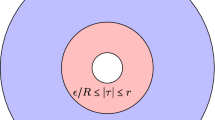Abstract
In this paper, we show several connections between the L-conjecture, proposed by Bürgisser, and the boundedness theorem for the torsion points on elliptic curves. Assuming the WL-conjecture, which is a much weaker version of the L-conjecture, a sharper bound is obtained for the number of torsion points over extensions of k on an elliptic curve over a number field k, which improves Masser’s result. It is also shown that the Torsion Theorem for elliptic curves follows directly from the WL-conjecture. Since the current proof of the Torsion Theorem for elliptic curves uses considerable machinery from arithmetic geometry, and the WL-conjecture differs from the trivial lower bound only at a constant factor, these results provide an interesting example where increasing the constant factor in a trivial lower bound of straight-line complexity is very difficult. Our results suggest that the Torsion Theorem may be viewed as a lower bound result in algebraic complexity, and a lot can be learned from the proof of the Uniform Boundedness Theorem to construct the proofs of the WL-conjecture or even the L-conjecture.
Similar content being viewed by others
Author information
Authors and Affiliations
Corresponding author
Rights and permissions
About this article
Cite this article
Cheng, Q. Straight-line programs and torsion points on elliptic curves. comput. complex. 12, 150–161 (2003). https://doi.org/10.1007/s00037-003-0180-0
Received:
Issue Date:
DOI: https://doi.org/10.1007/s00037-003-0180-0




